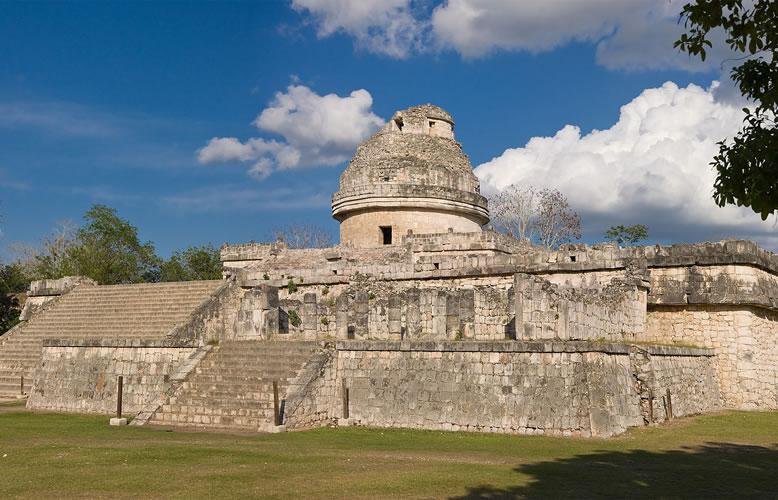Ancient Observations
7.1 - Understand the use of detailed observations of solar and lunar cycles by ancient civilisations around the world for:- a. agricultural systems
- b. religious systems
- c. time and calendar systems
- d. alignments of ancient monuments
We have records of the cycles of the Sun, Moon and stars used by our ancestors found throughout the world. Evidence exists of early cave paintings, calendar devices and stone monuments. For many, the cycles of the heavens would give some stability to their lives and achieve importance of in several ways.
Time and Calendar systems
Mayan and Babylonian cultures were advanced observers for their time and preserved their records. Greek, Indian and Persian astronomers have left us names and constellations that we still use today. Different cultures used different calendars and time keeping systems until Julius Caesar reformed it and spread the Julian calendar through the roman empire.
Agriculture
Knowing the time of year was important as farmers needed to know when the best time was to plant and harvest crops as well as breeding timescales for animals. In Egypt knowing when Sirius first rose in the sky would coincide with when the Nile would annually flood.
Religious Systems
Our ancients would have known stories told in their communities about constellations. Some cultures have a history of worshipping Sun or Moon gods. Times of year connected with celestial events such as solstices and equinoxes would be celebrated. As new religions such as Christianity developed these carried on as religious festivals such as Easter (Spring Equinox) and Christmas (Winter Solstice). Judaism and Islam both use lunar calendars to set important religious dates.
Myths and superstitions would arise so that if a comet was seen this would be a dramatic change in the normally unchanging sky and was thought to herald change. Solar eclipses were feared as the Sun would be blocked by some unseen force. Lunar eclipses would turn the Moon blood red.
Alignments of ancient monuments
Some cultures erected permanent monuments to assist their observations. Numerous erections acted as astronomical devices. One of the best well known is Stonehenge, the stone circle in Wiltshire, England. The pattern of the stones is aligned to the summer solstice sunrise and winter solstice sunset. Making observations today cannot be made with any certainty as many stones have deteriorated and possibly moved over the years. There are numerous theories about it acting as a lunar calendar also but either way it served as a social function bringing people together over many generations.
The pyramids had small shafts that were aimed at specific locations in the sky for the religious motivations of the Pharaoh. Newgrange in Ireland is the site of an ancient burial mound built 5,000 years ago. It is designed along a long underground passage. Light enters the passage on the winter solstice. Newgrange in Ireland is the site of an ancient burial mound built 5,000 years ago. It is designed along a long underground passage. Light enters the passage four minutes after sunrise on the winter solstice.
See the precession page for important information about these monuments.
NOTE: When researching information about Stonehenge or the Pyramids try to view materials written by reputable historians or scientists as a lot on the internet (and a few books as well) is not always well meaning and the historical and scientific accuracy is not always prioritised.
Links
- Portal to the Heritage of Astronomy
- University of Arizona Beginnings of Astronomy
- Universe Today Ancient People ... Knowledge of Astronomy





.jpg)

 | © All Rights Reserved |
| © All Rights Reserved |